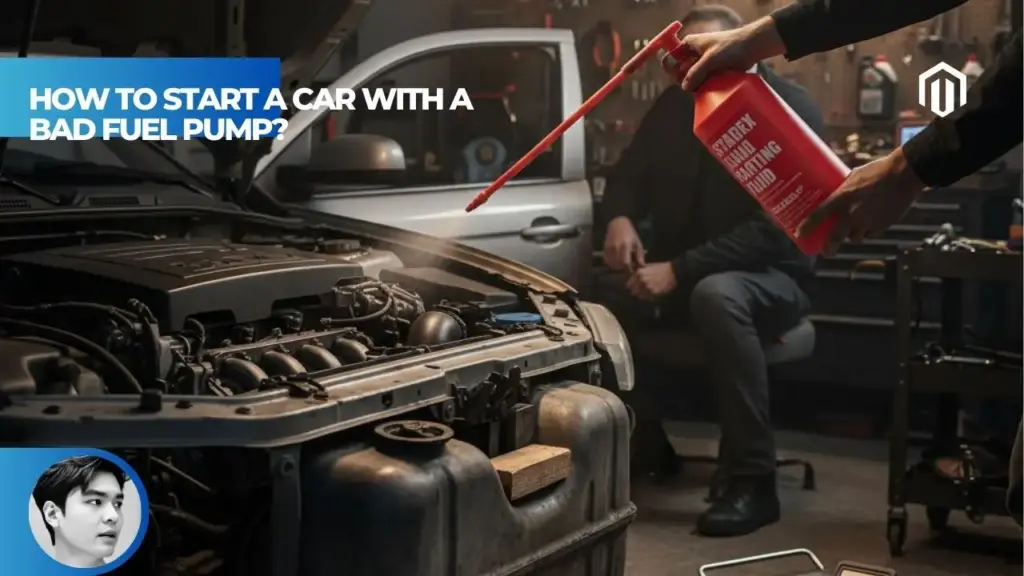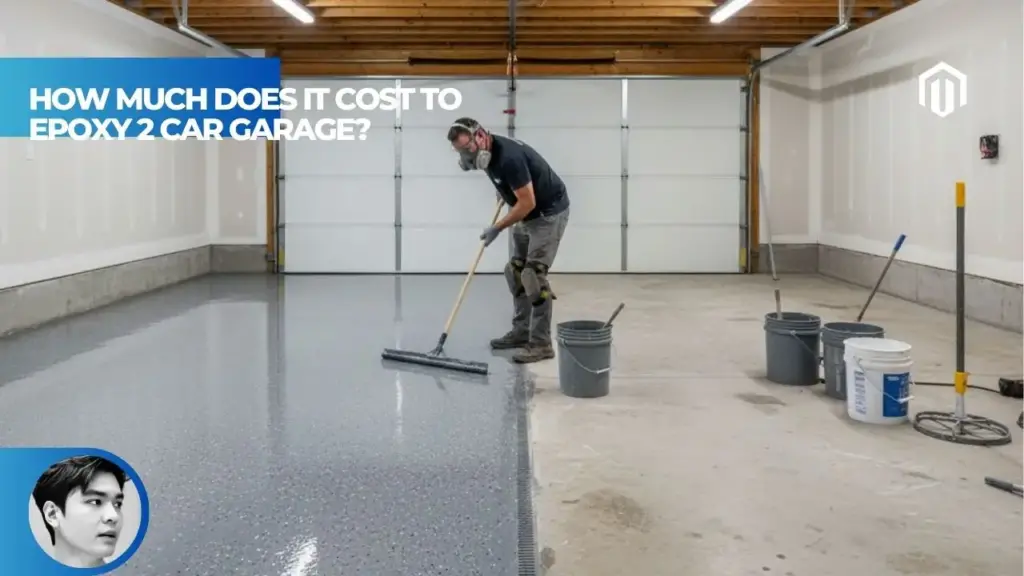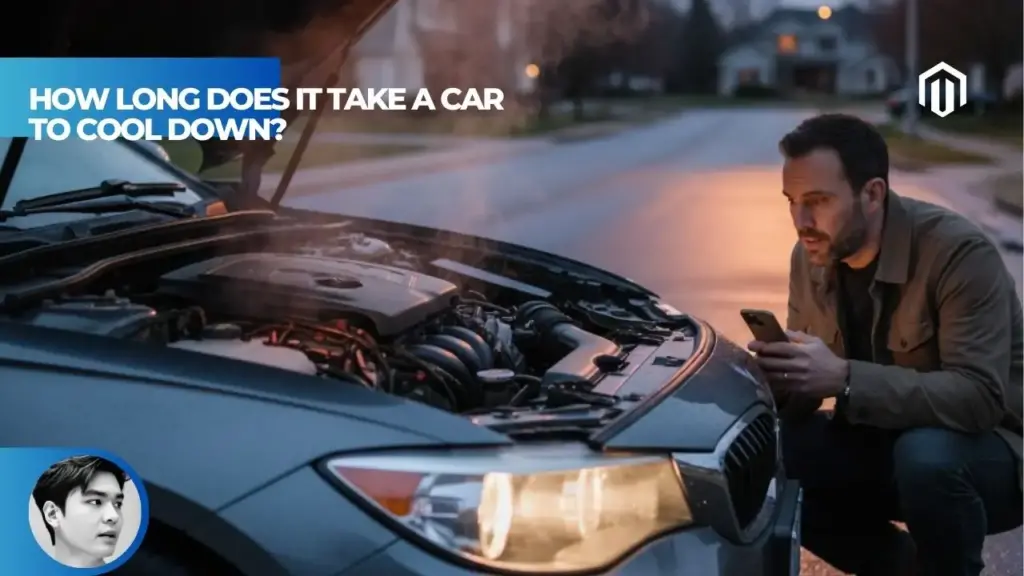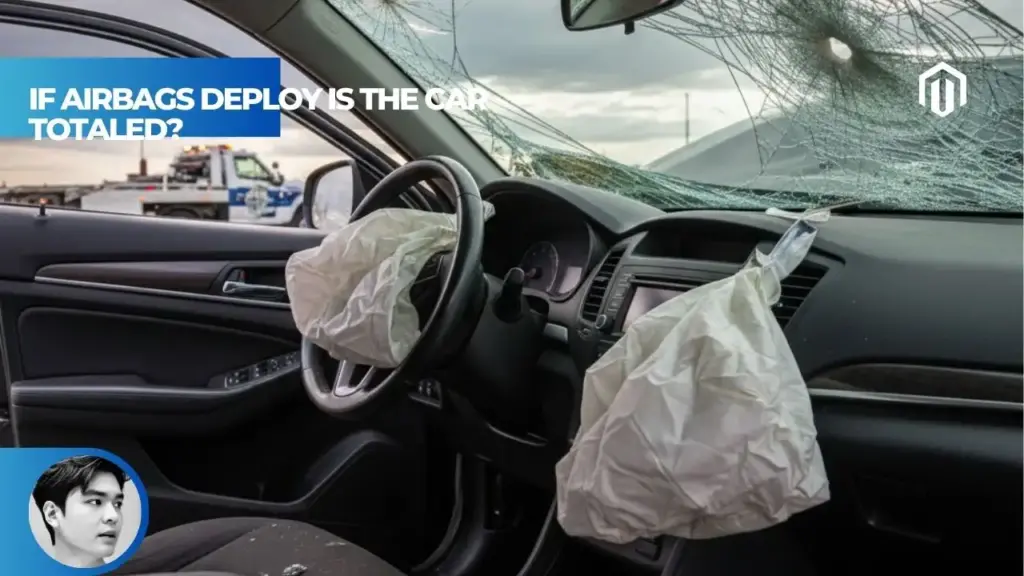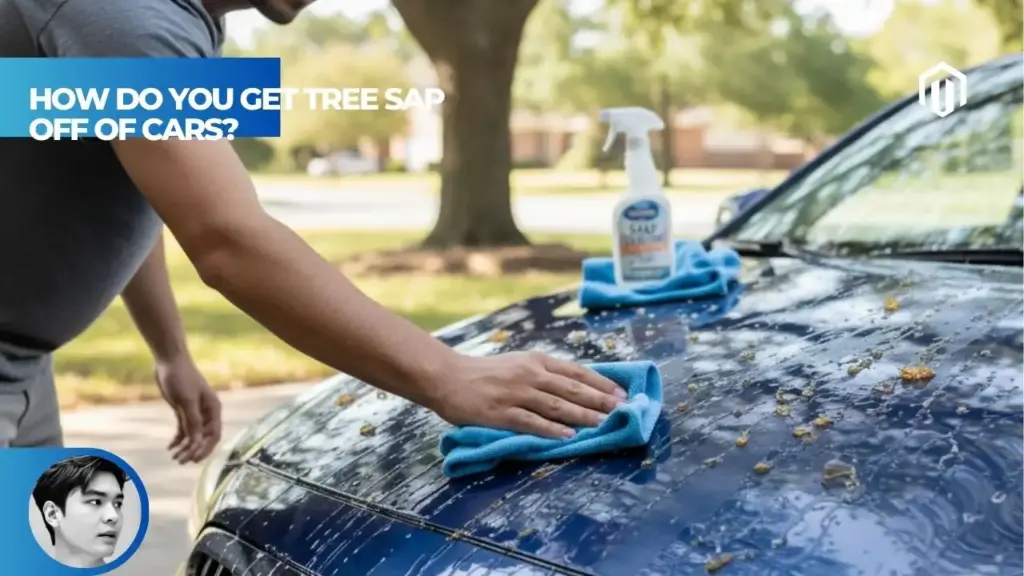You may also like:
- 【Explained】How Many Gallons of Gas Does a Car Hold? (Understanding Average Fuel Tank Capacity)
- 【Explained】Why does my car smell like gas but isn’t leaking?
- 【Explained】What Type of Gas Do BMW Take? Premium Fuel, Octane, and Knocking Explained
- 【Explained】Car Won’t Start in Cold But Battery is Good? (4 Causes)
- 【Explained】What Gas Does the Civic Type R Take?
You can temporarily start a car with a failing fuel pump by tapping the fuel tank with a rubber mallet to free stuck pump components, then cycling the ignition key multiple times to build fuel pressure before cranking the engine. However, these emergency methods work only with failing pumps (not completely dead ones) and carry significant risks including fire hazards and engine damage, with professional repair costing $900-$1,200 being the only safe permanent solution[1].
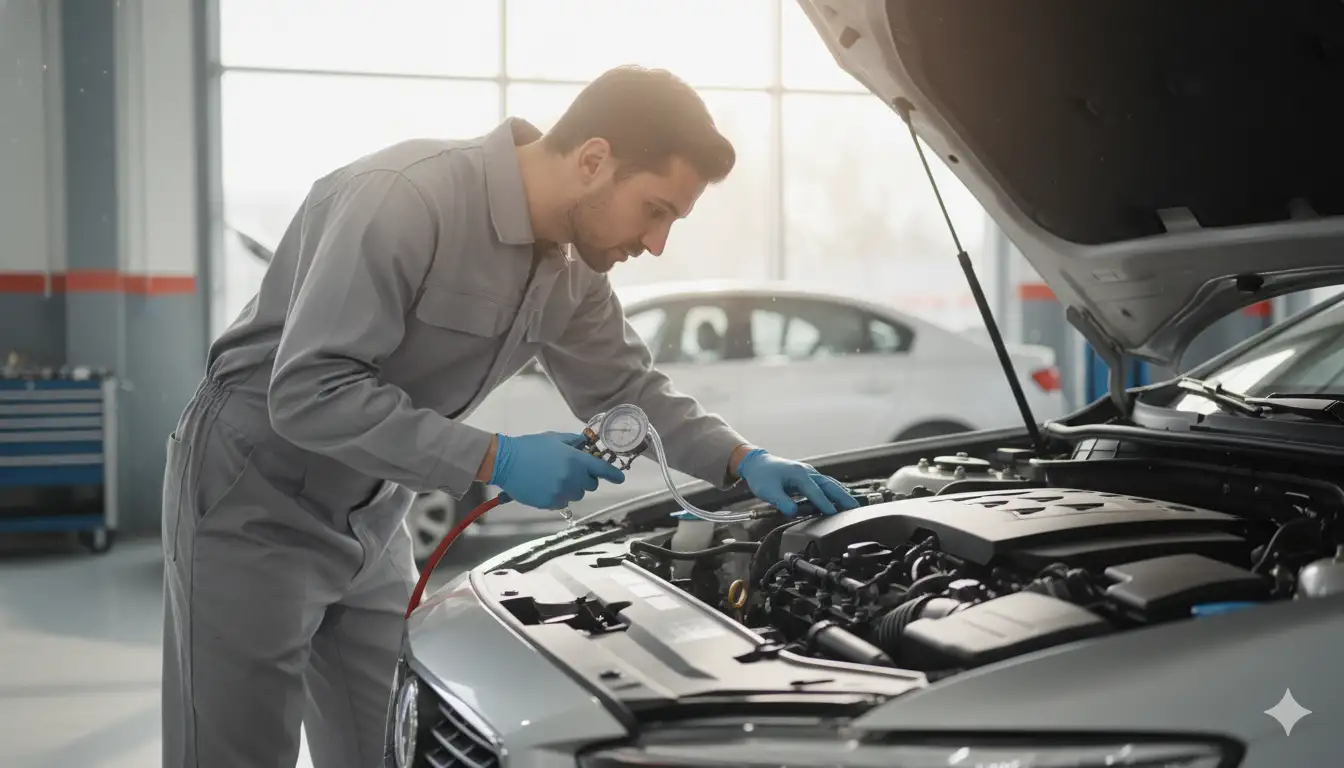
Temporary Fixes to Try First
When faced with a failing fuel pump, several emergency techniques might provide enough functionality to reach a repair shop. These methods exploit the mechanical and electrical weaknesses of a deteriorating pump, potentially providing temporary relief. According to automotive experts, these hacks succeed in approximately 30-40% of cases where the pump is failing but not completely dead[2].
Tap the Fuel Tank Method
The fuel pump tap method remains the most widely known emergency fix, working by jarring stuck internal components back into temporary operation. This technique specifically targets pumps with worn brushes or sticky armatures that prevent normal rotation.
Using a Rubber Mallet or Shoe
The vibration from tapping can temporarily free seized pump motors, particularly in older vehicles where carbon buildup affects brush contact. Use a rubber mallet, wooden block, or even your shoe heel—never metal tools that could spark or damage the tank[3]. Apply firm but controlled strikes to the tank’s bottom, focusing on the area directly beneath where the pump sits.
Professional mechanics recommend 5-10 moderate strikes, listening for the pump’s characteristic whirring sound when you turn the key to the “on” position. The success rate varies by pump type, with in-tank pumps responding better than external models. According to Autvex diagnostic data, this method works best on vehicles with over 100,000 miles where gradual wear causes intermittent pump failure.
Where to Locate the Fuel Tank
Most fuel tanks sit between the rear wheels, protected by the vehicle’s frame. Access points vary significantly by vehicle design:
Common fuel tank locations:
- Sedans: Centered under rear seat area
- SUVs/Trucks: Between frame rails behind rear axle
- Compact cars: Often offset to one side
- Mid-engine sports cars: Front trunk area
For specific models like the BMW 3 Series, the tank sits beneath the rear passenger compartment with the pump accessible through a service panel under the back seat. Similarly, Audi A4 models position their pumps centrally for balanced weight distribution.
Safety warning: Never tap near fuel lines, electrical connections, or exhaust components. If you smell gasoline, stop immediately—a leak combined with sparks could cause fire.
Cycle the Ignition Key to Build Pressure
Modern fuel-injected engines require 45-65 PSI of fuel pressure for proper operation[4]. A failing pump might generate insufficient pressure on the first attempt but can build adequate levels through repeated priming cycles.
How to Prime the Fuel Lines
Fuel pump priming exploits the pump’s brief 2-5 second run cycle when you first turn the ignition to “on” without cranking. Each cycle incrementally builds pressure in the fuel rail, potentially reaching operational levels after multiple attempts.
Proper priming sequence:
- Turn key to “ON” position (dash lights illuminate)
- Listen for fuel pump hum (2-5 seconds)
- Wait for pump to stop
- Turn key completely OFF
- Wait 3 seconds
- Repeat process 3-6 times
- Attempt to start engine
This method proves particularly effective after the vehicle sits overnight when residual pressure has bled off. Professional data shows cycling success rates of 25-35% for pumps experiencing electrical or pressure regulation issues[4].
Building Pressure Without Starting
Each ignition cycle activates the pump relay, sending power for a preset duration determined by the engine control module. This safety feature prevents pump burnout if the engine doesn’t start, but you can exploit it to accumulate pressure gradually.
Modern vehicles maintain pressure via check valves, but these often fail alongside the pump. Without functional check valves, pressure bleeds back immediately, explaining why some cars start after sitting briefly but not after extended periods. The cycling method compensates by repeatedly rebuilding pressure faster than it can leak away.
Engine Cooling for Temporary Reset
Heat exacerbates fuel pump problems by increasing electrical resistance and causing vapor lock. Pumps that fail when hot often work temporarily after cooling, providing a critical diagnostic clue about the failure mode.
Letting Engine Cool for Several Hours
Fuel pumps submerged in gasoline rely on the fuel for cooling. As levels drop below 1/4 tank, pumps run hotter, accelerating wear. A pump failing from heat-related issues might function after a 2-4 hour cooling period[5].
Temperature-related pump behavior:
- Hot failure: Pump stops after 20-30 minutes driving
- Cool recovery: Functions normally when cold
- Progressive degradation: Cool periods become shorter
- Complete failure: No recovery regardless of temperature
This cooling reset particularly affects pumps with worn bearings or inadequate lubrication. The temporary functionality allows one final trip to a repair facility, though reliability remains questionable. Never depend on this method for extended driving.
Check Fuel Pump Fuse and Relay
Electrical issues mimic pump failure symptoms but prove far simpler and cheaper to resolve. Before attempting mechanical interventions, verify the electrical system’s integrity—a $5 fuse might solve what appears to be a $1,000 pump replacement[6].
Finding the Fuse Box Location
Modern vehicles typically feature multiple fuse boxes protecting various circuits. The fuel pump fuse usually resides in the engine compartment box, though some models place it in the passenger compartment.
Common fuse box locations:
- Under hood: Near battery or firewall
- Dashboard: Driver’s side knee panel
- Passenger side: Behind glove box
- Trunk: Near battery in some European models
Your owner’s manual provides specific fuse identification, typically labeled “Fuel Pump,” “FP,” or “EFI.” The fuse rating ranges from 15-25 amps depending on pump specifications.
Identifying a Blown Fuse
Visual inspection reveals most fuse failures—look for a broken metal strip or blackened plastic housing. However, hairline breaks sometimes escape visual detection, requiring multimeter testing for confirmation.
Fuse testing procedure:
- Remove suspected fuse using fuse puller
- Inspect metal strip for breaks
- Check for discoloration or melting
- Test continuity with multimeter
- Replace with identical amperage rating
- Never use higher amp fuses
A blown fuse indicates either normal wear or underlying electrical problems. If replacement fuse immediately blows, suspect short circuits or pump seizure drawing excessive current.
Checking Fuel Pump Relay
The fuel pump relay acts as an electrical switch, controlling power flow to the pump. Relay failure presents identical symptoms to pump failure but costs only $20-40 to replace[7].
Relay testing methods:
- Swap test: Exchange with identical relay (often horn or AC clutch)
- Click test: Listen for clicking when key turned on
- Bypass test: Temporarily jumper power terminals
- Multimeter test: Check coil resistance and contact continuity
Most relay boxes include diagrams identifying each relay’s function. The fuel pump relay typically measures 1-inch square with 4-5 terminals. Corrosion on terminals often causes intermittent operation—cleaning with electrical contact cleaner might restore function.
Ensure Battery is Fully Charged
Weak batteries produce symptoms identical to fuel pump failure—the engine cranks but won’t start. Fuel pumps require substantial current, and marginal batteries might power lights and starter but lack capacity for pump operation.
Battery impact on fuel pump operation:
| Battery Voltage | Pump Performance | Starting Likelihood |
|---|---|---|
| 12.6V+ | Normal operation | Excellent |
| 12.2-12.5V | Reduced pressure | Good |
| 11.8-12.1V | Insufficient pressure | Poor |
| Below 11.8V | Pump may not run | Very unlikely |
Jump-starting or battery charging might temporarily resolve apparent pump failures. Clean battery terminals and ensure tight connections—corrosion increases resistance, reducing available pump voltage.
Diagnosis and Prevention
Accurate diagnosis prevents unnecessary repairs and identifies problems before complete failure strands you. Understanding failure symptoms helps distinguish pump issues from similar problems.
Symptoms of a Bad Fuel Pump
Fuel pump failure rarely occurs suddenly—warning signs typically precede complete failure by days or weeks. Recognizing these symptoms enables preventive replacement before roadside breakdown.
Car Sputtering and Engine Not Starting
Sputtering indicates inconsistent fuel delivery, often the first sign of pump deterioration. The engine receives intermittent fuel supply, causing rough running, hesitation, and power loss particularly under acceleration[8].
Progressive failure symptoms:
- Stage 1: Occasional hesitation during acceleration
- Stage 2: Sputtering at highway speeds
- Stage 3: Difficulty starting when hot
- Stage 4: Extended cranking before starting
- Stage 5: No-start condition
High-speed driving stresses weak pumps most, as fuel demand peaks during acceleration. Hills and passing maneuvers often trigger the first noticeable symptoms.
Fuel Pressure Low Indicators
Low fuel pressure manifests through various driveability issues before complete failure. Modern engines require precise pressure for proper injector operation—even 10 PSI below specification causes problems.
Low pressure symptoms:
- Lean misfire codes (P0171, P0174)
- Reduced power especially under load
- Surging at steady speeds
- Long crank times before starting
- Stalling at stop lights
- Poor fuel economy from incomplete combustion
Professional diagnosis requires a fuel pressure gauge, but these symptoms strongly suggest pump problems when combined with high mileage or age.
Using OBD-II Scanner for Fuel Pump
While OBD-II scanners cannot directly test pump operation, they reveal related fault codes providing diagnostic clues. Modern vehicles monitor fuel system performance, setting codes when parameters exceed thresholds.
Fuel pump-related diagnostic codes:
- P0230: Fuel pump primary circuit malfunction
- P0231: Fuel pump secondary circuit low
- P0232: Fuel pump secondary circuit high
- P0087: Fuel rail pressure too low
- P0088: Fuel rail pressure too high
- P0627: Fuel pump control circuit open
Advanced scanners display live data including fuel pressure (if equipped with sensor), fuel pump commanded status, and fuel trim values indicating mixture compensation. According to Autvex diagnostic protocols, fuel trims exceeding +25% often indicate insufficient fuel delivery.
Fuel Pressure Gauge Testing
Direct pressure measurement provides definitive pump diagnosis. Fuel pressure gauges connect to test ports on the fuel rail, displaying actual versus specified pressure.
Pressure testing procedure:
- Locate Schrader valve on fuel rail
- Relieve system pressure safely
- Connect pressure gauge
- Turn ignition on (engine off)
- Note static pressure reading
- Start engine and note running pressure
- Snap throttle and observe pressure response
Typical pressure specifications:
| Engine Type | Key-On Pressure | Idle Pressure | WOT Pressure |
|---|---|---|---|
| Port Injection | 45-55 PSI | 35-45 PSI | 45-55 PSI |
| Direct Injection | 55-65 PSI | 500+ PSI | 2,000+ PSI |
| Throttle Body | 15-20 PSI | 10-15 PSI | 15-20 PSI |
| Diesel | 5-10 PSI | Varies | Varies |
Pressure below specification confirms pump problems, though restrictions or regulator failures produce similar results.

DIY Car Repair Methods
When professional repair isn’t immediately available, several DIY interventions might restore temporary functionality. These methods range from simple chemical treatments to complex electrical modifications.
Temporarily Fix Fuel Pump
Understanding that these fixes provide only short-term relief, they might enable reaching a repair facility or buying time until parts arrive. Success depends on failure type and severity.
Fuel System Cleaner Application
Fuel system cleaners containing aggressive solvents sometimes restore partial pump function by dissolving varnish and carbon deposits. This method works best for pumps experiencing flow restrictions rather than electrical failures.
Cleaner application process:
- Add premium fuel system cleaner to tank
- Ensure at least 1/4 tank of fresh gasoline
- Run engine if possible to circulate
- Let sit 2-4 hours for penetration
- Attempt starting with cycling method
- Drive immediately to repair shop if successful
Choose cleaners specifically mentioning fuel pump cleaning—standard injector cleaners lack sufficient concentration. Products containing polyetheramine (PEA) prove most effective for deposit removal.
Fuel Pump Bypass (Technical Method)
Warning: This extremely dangerous modification should only be attempted by experienced technicians in genuine emergencies. Improper installation creates severe fire hazards.
External auxiliary pumps can temporarily bypass failed in-tank pumps. This requires cutting fuel lines, installing the auxiliary pump, and ensuring proper electrical connections—mistakes risk fire or explosion.
Professional mechanics occasionally use this method to move vehicles within repair facilities but never recommend it for road use. The modification violates safety standards and potentially voids insurance coverage if accidents occur.
Emergency Car Repair Solutions
When stranded without tools or parts, creative solutions might provide minimal functionality. These last-resort methods carry substantial risks but might prevent dangerous situations.
Emergency interventions:
- Gravity feed (older carbureted vehicles only)
- External pressure via tire inflator (extreme caution required)
- Manual priming through service port
- Fuel line tapping to dislodge debris
For modern vehicles, these methods rarely succeed due to high pressure requirements and safety systems. Calling for professional roadside assistance remains the safest option when standard methods fail.
Important Warnings and Safety
Attempted repairs on fuel systems present serious hazards including fire, explosion, and toxic exposure. Understanding these risks proves essential for safe emergency procedures.
Don’t Over-Crank the Engine
Excessive cranking damages multiple components while creating dangerous conditions. Starter motors overheat after 15-20 seconds of continuous operation, potentially causing permanent damage[9].
Cranking limitations and risks:
- 10-15 seconds maximum continuous cranking
- 60 seconds minimum cooling between attempts
- 3 attempts maximum before investigating further
- Battery drain reduces available pump voltage
- Starter damage costs $300-600 to repair
- Ring gear wear requires transmission removal
Over-cranking floods cylinders with fuel, washing oil from cylinder walls and potentially causing hydro-lock. Raw fuel entering the exhaust system risks catalytic converter damage costing $1,000-2,500 to replace.
Avoid Dangerous Internet Hacks
Social media promotes numerous dangerous “fixes” that risk serious injury or vehicle damage. These methods exploit desperation but create unacceptable hazards.
Why Not to Use Starting Fluid
Starting fluid (ether) might start engines but causes severe damage to modern fuel systems. The explosive combustion characteristics exceed design parameters, potentially cracking pistons or bending connecting rods[10].
Dangers of starting fluid:
- Detonation damaging pistons and valves
- Washed cylinders accelerating wear
- Sensor damage from excessive heat
- Fire risk from improper application
- No fuel pump benefit since problem remains
Other dangerous hacks to avoid include using phone chargers as power supplies, creating fuel system bypasses with aquarium pumps, or pressurizing tanks with compressed air.
Safety Risks of Bad Fuel Pump
Driving with a failing fuel pump creates multiple safety hazards beyond simple breakdown inconvenience. Understanding these risks emphasizes the importance of prompt repair.
Safety hazards from pump failure:
- Sudden stalling in traffic or intersections
- Power loss during highway merging
- Fire risk from electrical arcing
- Fuel leaks if pump seal fails
- Stranding in dangerous locations
- Accident risk from unexpected failure
Insurance companies may deny claims if investigations reveal known mechanical defects contributed to accidents. Document all symptoms and repair attempts for potential liability protection.
When to Call for Tow Truck
Recognizing when DIY attempts become dangerous prevents accidents and additional damage. Professional towing costs $75-150 but prevents thousand-dollar consequential damages[1].
Towing indicators:
- Starting attempts fail after 3 tries
- Fuel smell indicates potential leak
- Electrical burning odor detected
- Engine cranks unusually fast (no compression)
- Check engine light flashes (catalyst damage)
- You’re in unsafe location
Many insurance policies include roadside assistance covering towing costs. Credit cards and auto club memberships often provide similar benefits. Even without coverage, towing remains cheaper than potential repair escalation.
Troubleshooting Car Won’t Start Issues
Not every no-start condition indicates fuel pump failure. Systematic diagnosis prevents unnecessary pump replacement when simpler issues exist.
Fuel System Problems Beyond the Pump
Multiple components affect fuel delivery, creating symptoms identical to pump failure. Understanding the complete system helps identify actual failure points.
Related fuel system components:
| Component | Function | Failure Symptoms | Test Method |
|---|---|---|---|
| Fuel filter | Removes contaminants | Reduced power, stalling | Pressure drop test |
| Pressure regulator | Maintains pressure | Rich/lean running | Vacuum test |
| Fuel injectors | Delivers fuel | Rough idle, misfire | Resistance test |
| Fuel lines | Transports fuel | No fuel delivery | Visual inspection |
| Tank ventilation | Prevents vacuum | Stalling after running | Cap removal test |
Clogged filters restrict flow identically to weak pumps but cost only $20-50 to replace. Similarly, failed pressure regulators cause symptoms requiring $100-200 repairs versus $900-1,200 for pumps[1].
Differentiating Fuel Pump from Other Issues
Systematic testing isolates fuel pump problems from similar failures. This diagnostic approach prevents expensive misdiagnosis.
Diagnostic decision tree:
- Check for spark – Eliminates ignition issues
- Verify compression – Rules out mechanical problems
- Test fuel pressure – Confirms delivery issues
- Inspect air intake – Ensures proper air/fuel mixture
- Scan for codes – Identifies sensor failures
- Check security system – Some prevent fuel pump operation
For comprehensive diagnosis beyond fuel systems, cold start troubleshooting guides provide additional diagnostic steps. Similarly, issues with accident-damaged vehicles might involve multiple systems requiring professional assessment.

Key Takeaway
You can temporarily start a car with a failing (not completely dead) fuel pump using emergency methods like tapping the fuel tank to free stuck components, cycling the ignition key 3-6 times to build pressure, and verifying electrical components like fuses and relays that cost under $40 to replace. However, these risky temporary fixes work only 30-40% of the time and should solely serve to reach immediate professional repair, as continuing to drive risks engine damage, fire hazards, and dangerous stalling, making the $900-1,200 average pump replacement cost a necessary safety investment[1].
Next Steps
If your car won’t start and you suspect fuel pump failure, first check the simple electrical components—inspect the fuel pump fuse for breaks and test the relay by swapping with an identical one, potentially solving the problem for under $40. Attempt the tap method with 5-10 firm strikes on the fuel tank bottom using a rubber tool, then try the key cycling technique 3-6 times listening for pump activation, but limit starting attempts to three tries maximum. If these emergency methods succeed, drive immediately to a repair facility without stopping, as the fix is temporary and failure could occur anytime. When DIY attempts fail or you smell gasoline, call for professional towing to prevent the fire hazards and additional damage that continued attempts create, accepting that permanent pump replacement is the only safe long-term solution.
FAQs
Can you start a car with a bad fuel pump?
Yes, you may temporarily start a car with a failing (not completely dead) fuel pump using methods like tapping the tank with a rubber mallet or cycling the ignition key, but these emergency measures work only 30-40% of the time and provide temporary relief just to reach a repair shop[2].
How do I start my car if the fuel pump is bad?
Tap the fuel tank bottom firmly 5-10 times with a rubber mallet, cycle the ignition key to “ON” position 3-6 times to build pressure, check and replace the fuel pump fuse/relay if blown, and ensure the battery has full charge above 12.6V before attempting to start[3].
How can I test if my fuel pump is working?
Turn the key to “ON” without starting and listen for a 2-5 second humming sound from the tank area, use a fuel pressure gauge on the test port to verify 45-55 PSI for port injection systems, or check for pump-related codes P0230-P0232 with an OBD-II scanner[8].
What are the symptoms of a bad fuel pump?
Common symptoms include engine sputtering during acceleration, difficulty starting especially when hot, stalling at stop lights, loss of power on hills, extended cranking before starting, whining noise from the fuel tank, and poor fuel economy with lean misfire codes[8].
Can I drive a car with a bad fuel pump?
Driving with a bad fuel pump is strongly discouraged due to risks of sudden stalling in traffic, complete power loss during highway merging, potential fire hazards from electrical arcing, and engine damage from lean running conditions[10].
What are some temporary fixes for a bad fuel pump?
Temporary fixes include tapping the fuel tank to free stuck components, cycling the ignition key to build pressure, letting hot engines cool for 2-4 hours, using fuel system cleaner to remove deposits, and checking electrical components like fuses and relays[5].
What happens if I try to start a car with a bad fuel pump?
The engine may crank but not start due to no fuel delivery, or it might start briefly then stall as pressure drops, while over-cranking risks damaging the $300-600 starter motor and potentially causing catalytic converter damage from fuel flooding[9].
How do you know for sure if your fuel pump is bad?
Definitive diagnosis requires checking fuel pressure with a gauge showing readings below 45-55 PSI specification, testing the pump relay and fuse for continuity, using diagnostic scan tools to check for fuel system codes, and ruling out other causes like clogged filters or failed pressure regulators[7].
References
- Consumer Affairs. (2025). How much does it cost to replace a fuel pump? Retrieved from https://www.consumeraffairs.com/automotive/how-much-does-it-cost-to-replace-a-fuel-pump.html
- Kemso Racing. (2025). Temporary Fix for Fuel Pump: Urgent, Risky Last-Resort Measures Explained. Retrieved from https://www.kemsoracing.com/blogs/news/temporary-fix-for-fuel-pump-urgent-risky-last-resort-measures-explained
- RSC Auto Repair. (2025). How to Start a Car When the Fuel Pump Is Failing. Retrieved from https://rscautorepair.com/how-to-start-car-when-fuel-pump-failing/
- Kemso Racing. (2025). How to Start Car After Replacing Fuel Pump: The Essential Guide. Retrieved from https://www.kemsoracing.com/blogs/news/how-to-start-car-after-replacing-fuel-pump-the-essential-guide-to-getting-back-on-the-road
- Goldfarb Inc. (2022). How to Start a Car With a Bad Fuel Pump. Retrieved from https://goldfarbinc.com/blogs/news/how-to-start-a-car-with-a-bad-fuel-pump
- American Dream Auto Protect. (2023). Temporary Fuel pump; common problems and how to fix them. Retrieved from https://americandreamautoprotect.com/temporary-fuel-pump-common-problems-and-how-to-fix-them
- High Flow Fuel. (2025). How Much Does It Cost to Replace a Fuel Pump? Retrieved from https://blog.highflowfuel.com/how-much-does-it-cost-to-replace-a-fuel-pump/
- AutoZone. (2025). How to Identify the Signs of a Bad Fuel Pump. Retrieved from https://www.autozone.com/diy/symptoms/bad-fuel-pump-symptoms
- John Ellis and Son. (2025). Emergency Hacks to Start a Car with a Bad Fuel Pump. Retrieved from https://www.johnellisandson.com/emergency-hacks-to-start-a-car-with-a-bad-fuel-pump/
- The Auto Monkey. (2025). How to Spot a Failing Fuel Pump. Retrieved from https://www.theautomonkey.com/blog/automotive-advice/how-to-spot-a-failing-fuel-pump/

I am a senior automotive analyst at Autvex. Expert vehicle evaluations, in-depth reviews, and objective analysis helping readers make informed automotive decisions with years of industry experience.

